Celebrating Mistakes and Embracing Process
Emily Roach, a Middle School Computer Science and Digital Communications teacher, working with grades 6-8, gives us a look inside her classroom at Ravenscroft, a coeducational pre-K through 12 college preparatory school in Raleigh, NC.
Classroom Culture: Celebrate the Struggle
In Emily’s classroom, students are steeped in a culture of iteration and possibility, instilled and reinforced by classroom practices and resources.
Some examples include:
1. Bug Wall To help normalize mistakes as part of the learning process, Emily set up a Bug Wall, where students put a ‘bug’ (breadboard chip) on the bulletin board whenever they make a mistake in their code. They keep track of bugs, and whichever class has more at the end of the year gets a “worms in dirt” pudding party.
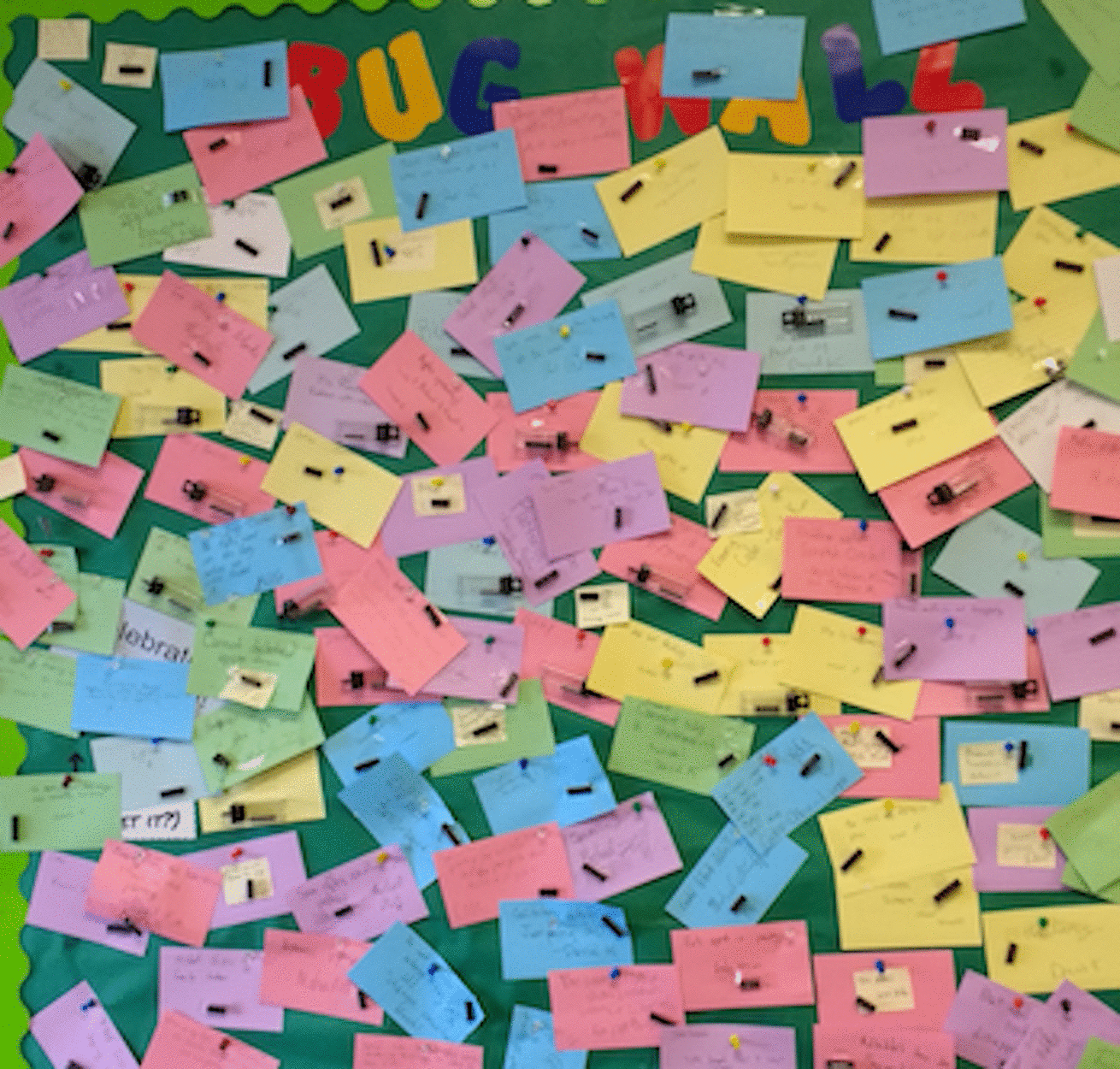
2. Debugging strategies When students are stuck, they know a few methods to try:
- think like a computer
- take out lines of code to see what they do
- guess and check
- look it up
3. Iteration days On certain days, students are invited to go back to a previous project, with feedback. They then take what they’ve learned and make their project better.
4. Constant reinforcement of inclusion Emily sees Middle School as a crucial time for CS education, “Cognitively, middle schoolers are starting to think abstractly for the first time. Socially and emotionally, many girls and students of color are starting to see themselves as not the ‘type’ of people who are good at STEM.” To counter stereotypes, she structures regular pair programming into her lessons, maintains an “Engineer Wall” of diverse role models, and regularly facilitates conversations about diversity and collaboration.
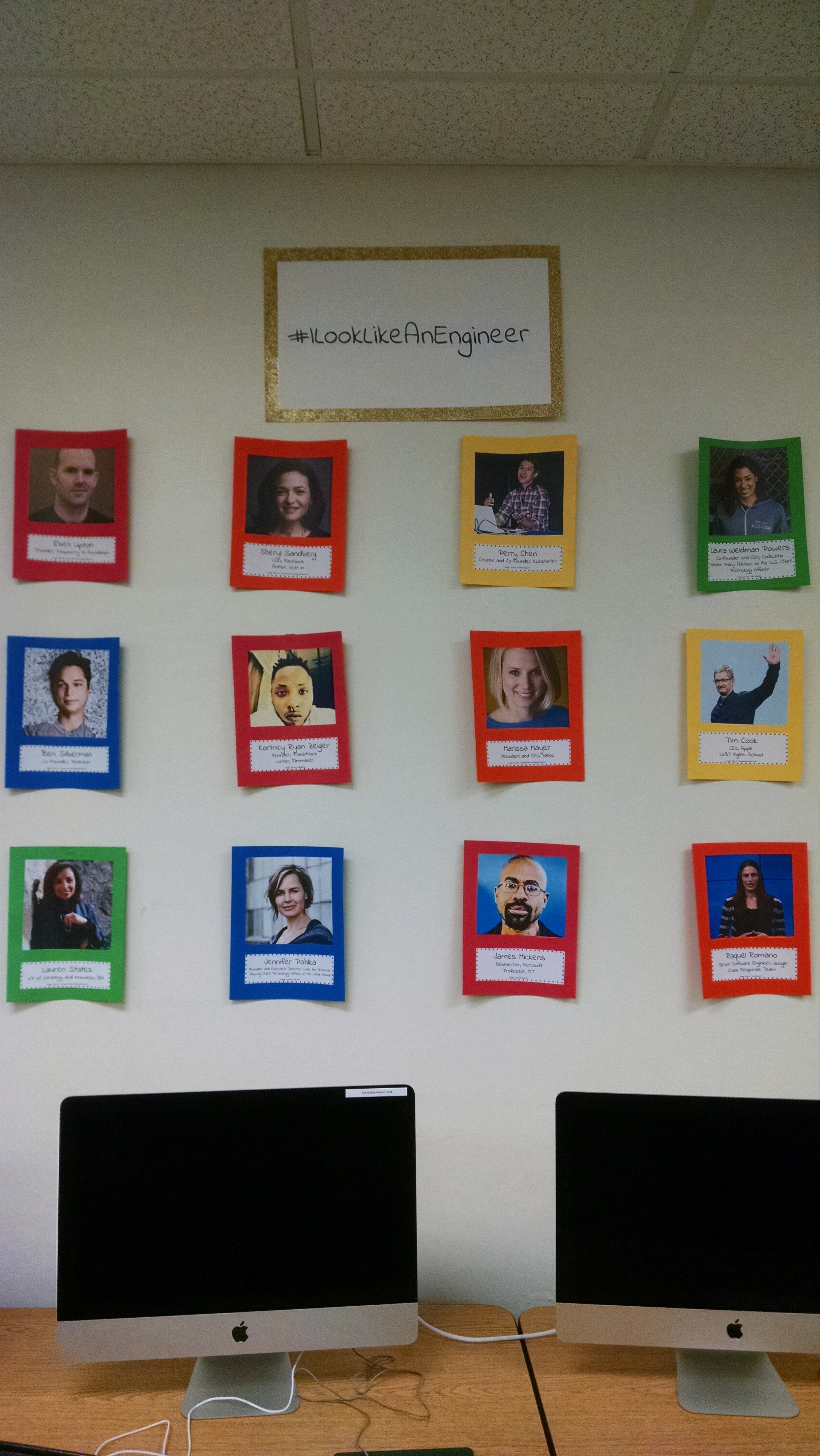
The "Engineer Wall" showcases diverse role models.
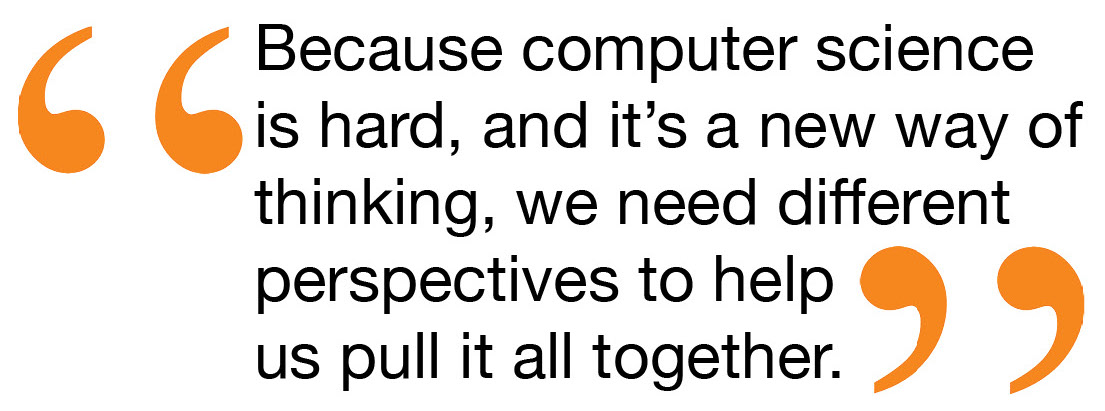 “We talk about how CS is all about creatively solving problems, so we need to welcome people with different backgrounds into the conversation because they might experience different problems or come up with solutions we hadn’t considered. This is when I tell the story of my first time programming. My partner took one look at me, with my long hair and sundress, and told me that I was lucky to be working with him. I explain to them that even as I sassed him back with a confident ‘actually, you’re lucky to be working with me,’ deep down I believed him, and I didn’t contribute anything at all to that first programming assignment. We use this story to talk about how we sometimes assume our partner doesn’t have something to offer, and how that ultimately limits us. Because computer science is hard, and it’s a new way of thinking, we need different perspectives to help us pull it all together.”
“We talk about how CS is all about creatively solving problems, so we need to welcome people with different backgrounds into the conversation because they might experience different problems or come up with solutions we hadn’t considered. This is when I tell the story of my first time programming. My partner took one look at me, with my long hair and sundress, and told me that I was lucky to be working with him. I explain to them that even as I sassed him back with a confident ‘actually, you’re lucky to be working with me,’ deep down I believed him, and I didn’t contribute anything at all to that first programming assignment. We use this story to talk about how we sometimes assume our partner doesn’t have something to offer, and how that ultimately limits us. Because computer science is hard, and it’s a new way of thinking, we need different perspectives to help us pull it all together.”
Scratch In Action: Movie Project
Emily wanted to create a project that hit learning goals while engaging the middle school mindset. She was looking for a project that helped show learners the different things they can do with CS and how their hard work can pay off. And she wanted the project to reinforce the school’s Citizen Leader Framework, which teaches students to be inclusive, collaborative, strategic, visionary, communicative, and growth-minded.
Her initial plan was to have students program their own stories in pairs. “I wanted them to pull together skills they have learned as well as learn about program control and parallelism using broadcast blocks, but then realized it could give them a new and exciting experience to collaborate with the entire class.”
So they embarked on a classwide mission to storyboard a movie, breaking the story into scenes, pair-programming each scene, exporting the projects as videos, and editing them together.
When asked to reflect on the process and the outcomes, Emily shared lots of details:
How did you do it?
- We used Creative Computing Lab’s Penguin Jokes lesson to practice using broadcast blocks
- We watched videos from programmers at Pixar talking about their work
- I asked students to brainstorm some stories that either everyone in the class knew or that could easily be explained
- We voted on one idea and mapped out the plot
- We broke into enough scenes so that each pair could program one scene
- Each group storyboarded their scene
- As a class, we decided on common Sprites, backgrounds, etc
- Students had several days to program their piece
- Students added the project to a class studio, and I went in and exported each one to video. Then I edited them together in iMovie and put in some titles, music, and transitions
- We had a film screening with popcorn!
- Students had a project they all felt ownership over and realized that they accomplished more as a group than they could have on their own.
- We talked about how most software they use on a daily basis was programmed by teams instead of individuals, and we discussed how those teams might break a product down into features. It got the students thinking about how much communication goes into making a large-scale project.
- Students compared and contrasted movies with video games, our next unit, which led to a conversation about user input and robustness.
- Some students said they wanted to program movies when they got older!
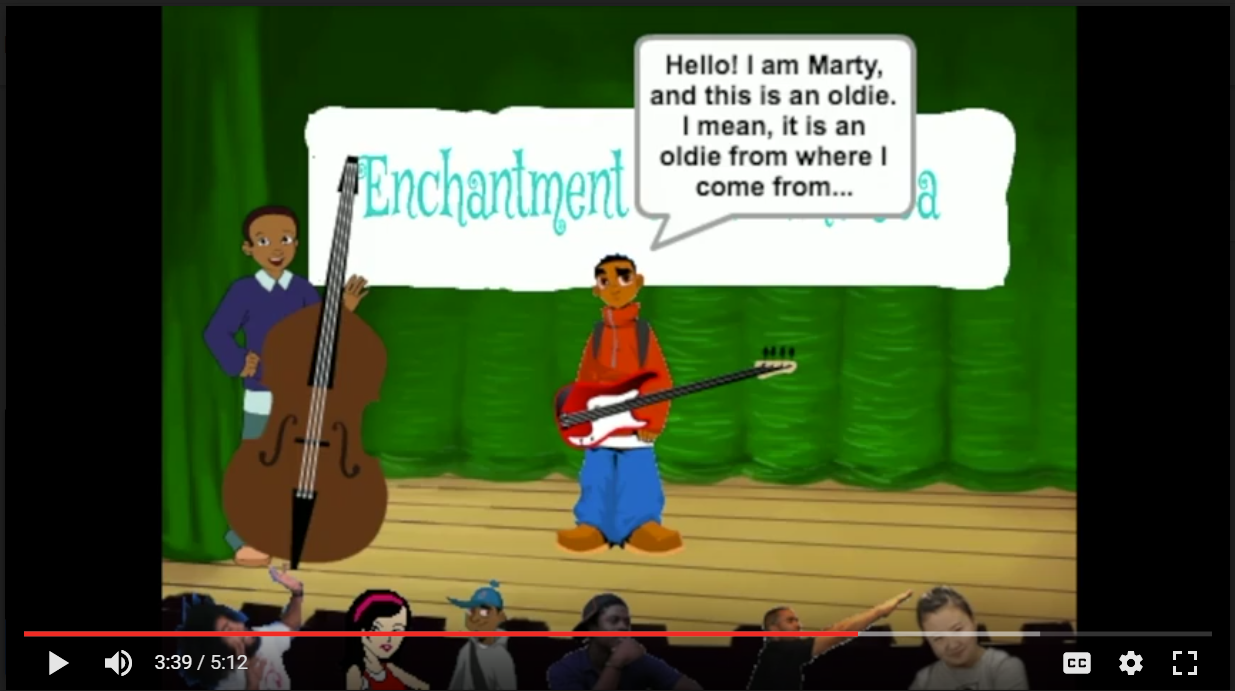
A screenshot from the film students created.
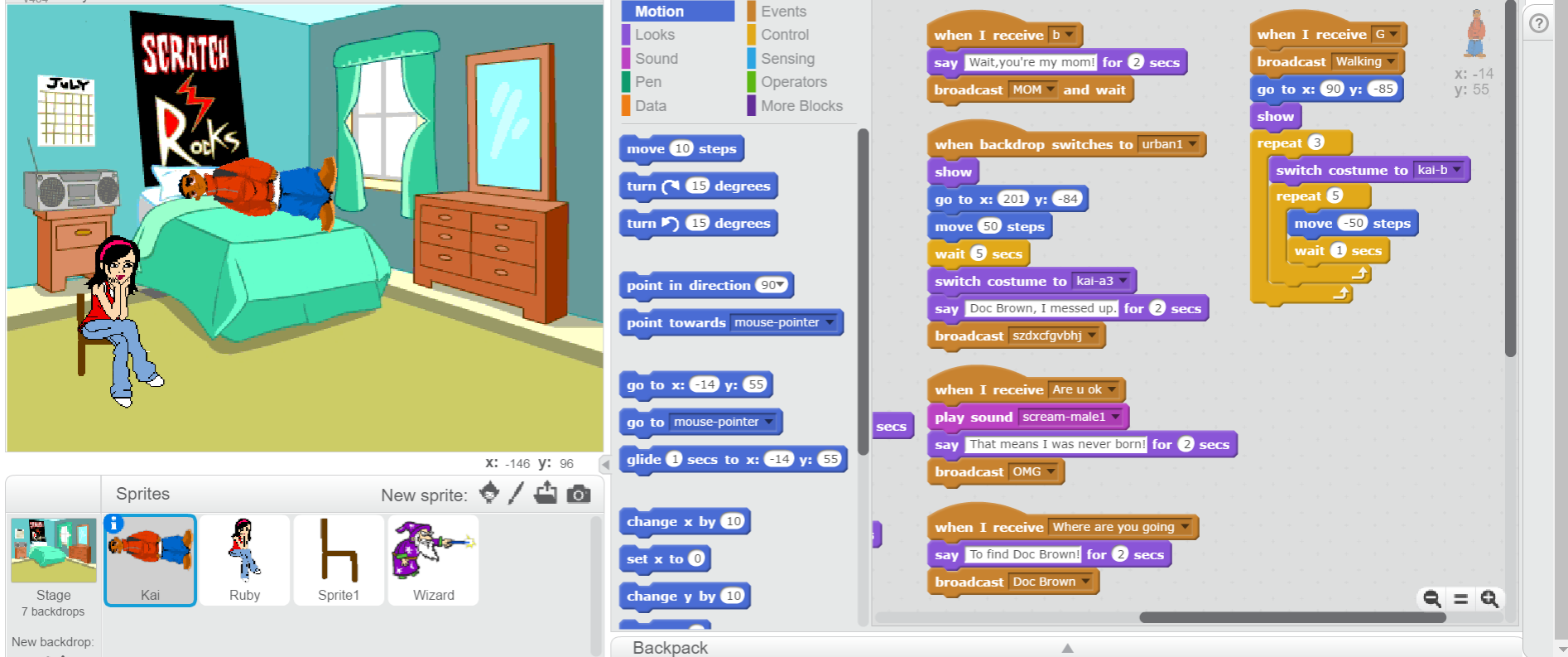
Screenshot of Back to the Future Scratch code.
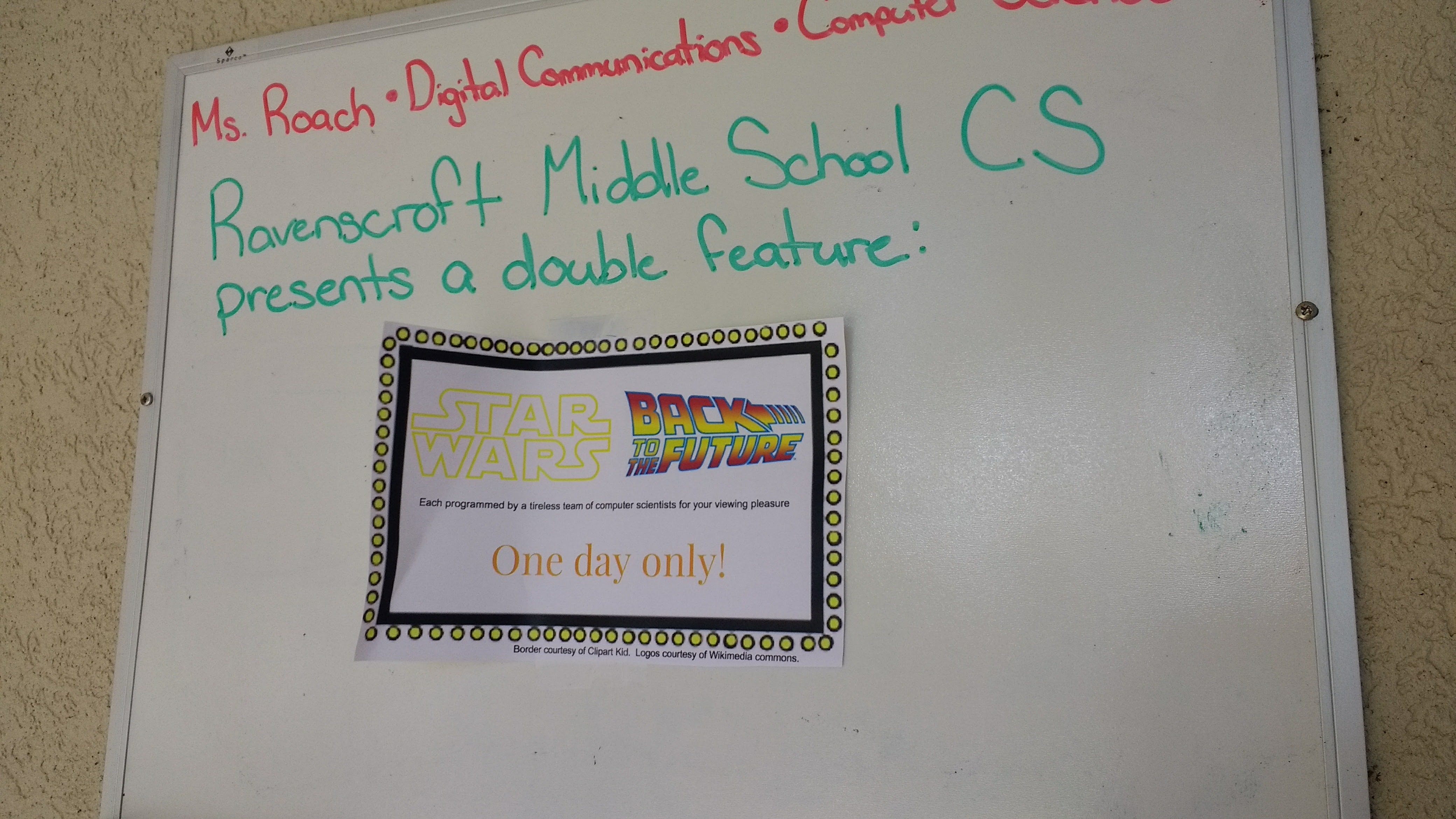
Flyer promoting the students' films.
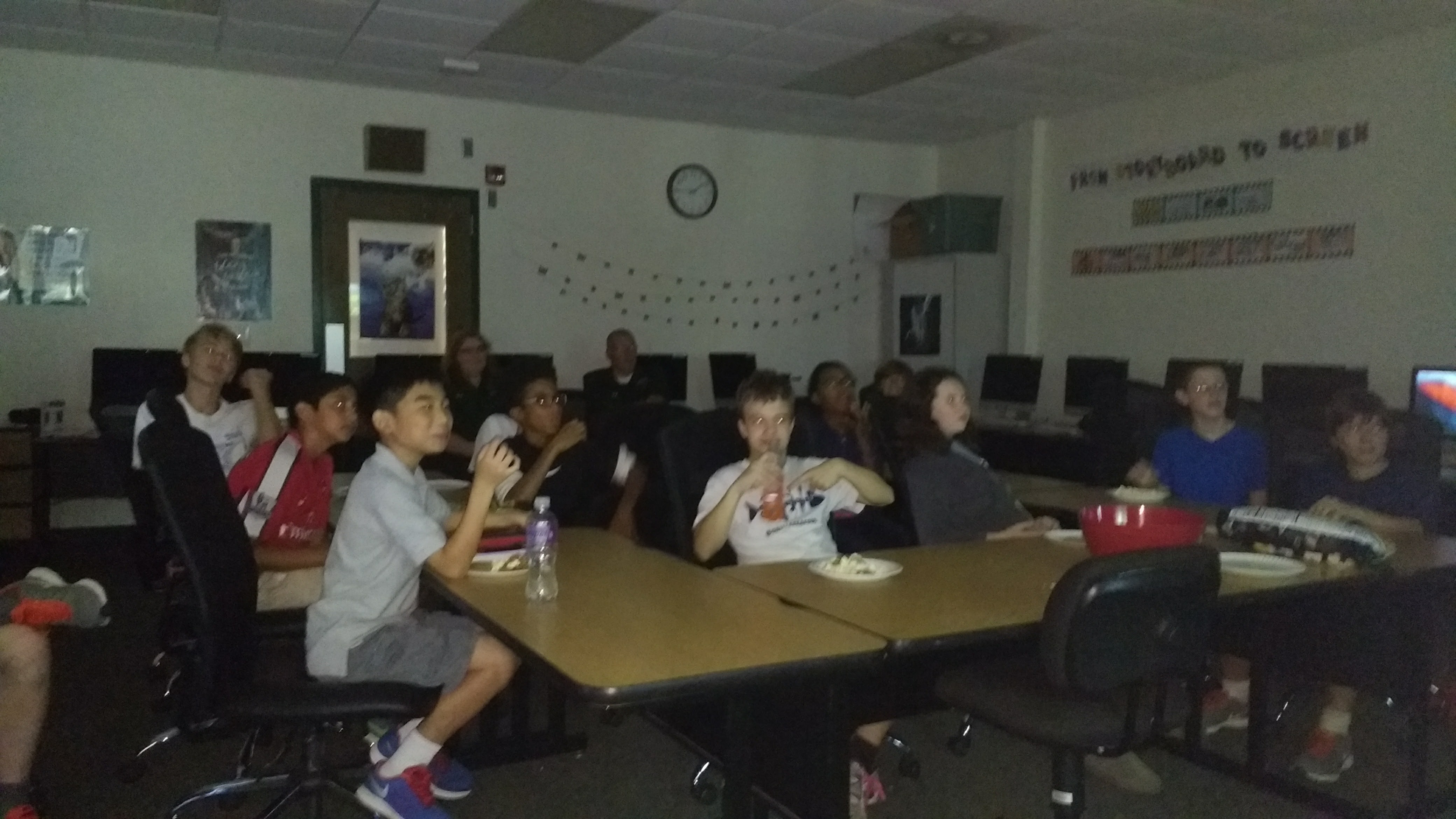
Movie screening, with popcorn.


My name is Tiik Pollet. I am a digital arts teacher at a unique, one of a kind, arts elementary school in Washington DC, Fillmore Arts Center.
I would love to see the movie your students created with Scratch. Is that possible?
I teach from the Adobe CS6 suite: Photoshop, Flash, Premiere, InDesign, Illustrator...and also we use iMove, Dragon Frame and Comic Life.
My Teacher website - http://www.mspolletdigitalartclass.com/
I'm working on the headers so don't be surprised if they keep changing over the weekend.
Fillmore - www.fillmoreartscenter.org
Maybe we can partner our students on a project. I have one in mind if appropriate.
Love to hear back from you.
Blue Skies,
Tiik